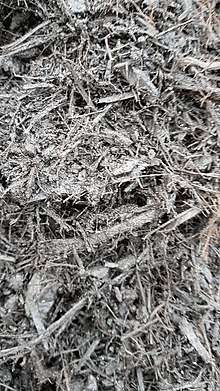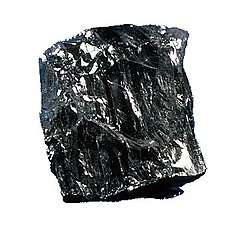Xylit
Xylit (from xylon, « wood ») is a waste reclamation obtained all around the world from the mining of lignite.

Like in the peat, we can still observe the wooden structures not completely sedimented.
Uses
Its very low heat content, even in dried state, makes it considered as insufficient rank of coal. It is not used as fuel for heat generation.
Xylit is sometimes used for the production of potting soil and professional substrate for horticulture.[2]
Because of its good mechanical characteristics, with more elasticity and robustness than wood,[3] and its good filtering characteristics, Xylit is sometimes used as wood chips or for water filtration.

Its unique structure, that allow nutrients and pollutants to fix on it, its high specific surface area (encouraging trickling filter development) and its exceptional longevity (30 years) allow to be used as a very high quality filter. It is used as filter media in some decentralized wastewater systems.
It has been proven in France that it could be turned in compost
Commercial uses
- The Belgian company Eloy uses Xylit as filtering media in its X-Perco
- The Aquaterra company uses Xylit as riverbanks stabilization
Références
- "Xylit - épuration des eaux" (PDF).
- https://de.wikipedia.org/w/index.php?title=Xylit_(Kohle)&oldid=169868836
- "Xylit - épuration des eaux" (PDF). Aquaterra solutions (in French).
This article is partially translated from German and French Wikipedia articles.
